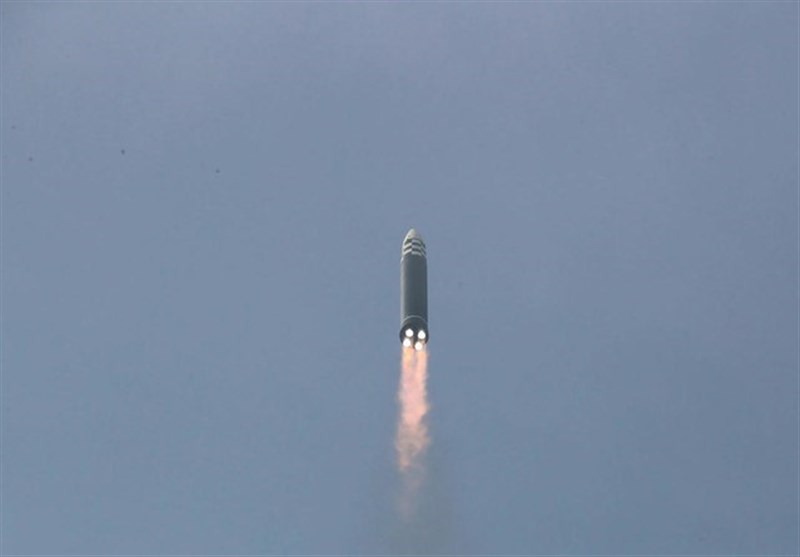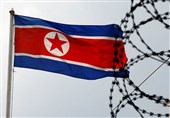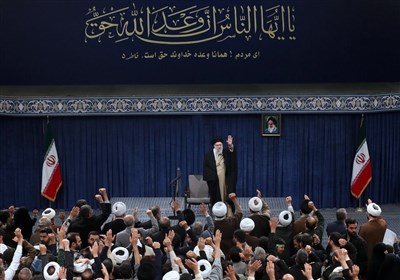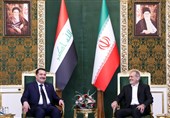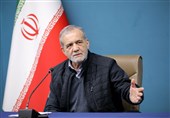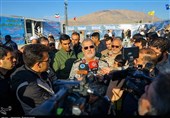North Korea Fires ‘ICBM-Class’ Missile: Japan Official
TEHRAN (Tasnim) – North Korea has fired a ballistic missile that appears to have landed in Japan’s economic exclusion zone, according to Japanese and South Korean officials.
Saturday’s move by North Korea comes ahead of upcoming US-South Korea table-top exercises in Washington next week.
“North Korea fires an unidentified ballistic missile into (the) East Sea,” South Korea’s Joint Chiefs of Staff said, referring to the body of water also known as the Sea of Japan, Al Jazeera reported.
Japanese government spokesman Hirokazu Matsuno later told reporters North Korea had fired an “ICBM-class ballistic missile” to the east, referring to long-range intercontinental ballistic missiles Pyongyang has increasingly tested. The missile traveled an estimated 900 kilometers (560 miles), reaching a maximum altitude of 5,700 kilometers, he said.
Speaking to reporters after the launch, Japanese Prime Minister Fumio Kishida said the missile appeared to have landed “within Japan’s EEZ (exclusive economic zone), west of Hokkaido.”
South Korean official, meanwhile, said the “presumed long-range missile” was launched from the Sunan area near Pyongyang. Sunan is the site of the Pyongyang International Airport, where North Korea has conducted most of its recent ICBM tests.
The launch came a day after North Korea’s Foreign Ministry threatened to take “unprecedentedly” strong action against South Korea after it announced planned military exercises.
The North Korean statement on Friday accused Washington and Seoul of planning more than 20 rounds of military drills this year, including large-scale field exercises, and described its rivals as “the arch-criminals deliberately disrupting regional peace and stability.”
The US tabletop exercise, scheduled for Wednesday, would set up possible scenarios where North Korea uses nuclear weapons and would explore how to cope with them militarily and formulate crisis management plans, South Korea’s Defense Ministry has said.
“With a focus on North Korea’s nuclear threats, both sides will have in-depth discussions on various measures to strengthen US extended deterrence, including information sharing and consultation procedures,” the ministry said in a statement.
Heo Tae-keun, South Korea’s deputy minister of national defense policy, also told legislators on Friday the two countries would hold joint field exercises in mid-March that would be bigger than those held in the past few years. The exercises are expected to include live-fire drills.
The latest launch follows a record year for North Korean weapons demonstrations, with Pyongyang firing more than 70 ballistic missiles fired, including ICBMs with the potential range to reach the US mainland.
North Korea has also conducted several launches it described as simulated nuclear attacks against South Korean and US targets, while passing a law that declared the country an “irreversibly” nuclear state.
The increased activity from Pyongyang has been met with ramped up joint military drills from South Korea and key allies.
That followed a scaled back period amid the COVID-19 pandemic as well as a fruitless diplomatic offensive by former US president Donald Trump.
Some 28,500 US troops are stationed in South Korea as a legacy of the 1950-1953 Korean War, which ended in an armistice rather than a full peace treaty, leaving the countries technically still at war.
Saturday’s launch marked the first detected from North Korea since January 1.
Last November, a missile fired by Pyongyang was also believed to have landed in Japan’s EEZ.
